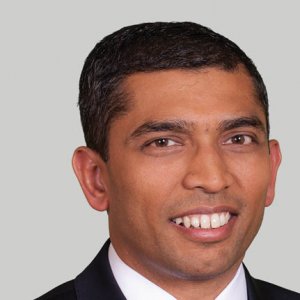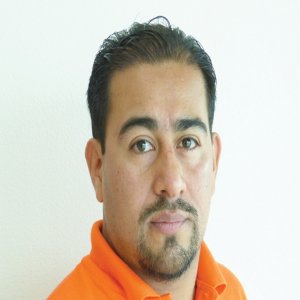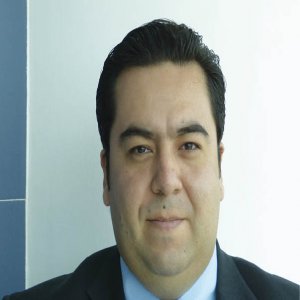Round One Fallout Will Require More Advanced Rigs

STORY INLINE POST
Q: How does Paragon Offshore’s heritage position it as a leader in the drilling industry?
A: Paragon Offshore (Paragon) has a rich history as a drilling contractor. Although our name is new due to the recent spinoff, our previous owner, Noble Corporation, was established in 1921. Noble has always enjoyed a very strong reputation in the industry since it provides its customers with wellmaintained rigs operated by some of the most reliable crews in the business. Throughout its long history, Noble continually expanded its geographic footprint, which began onshore in Oklahoma and grew worldwide. This has been based on a growing portfolio of land rigs, shallow water jack-ups, and some of the most advanced ultra-deepwater rigs ever built. When the spin-off took place back in July 2014, Paragon’s operations spanned across 12 countries on five continents.
Our company provides drilling services to clients ranging from small independent companies in the North Sea and West Africa, to supermajors like Total, and NOCs like PEMEX and Petrobras. We own and operate a fleet of 39 drilling units, including 34 jack-ups and five floating drillships and semi-submersibles. Our fleet also includes two recently acquired high-specification, heavy-duty, harsh environment jack-ups currently operating for Total in the North Sea. One of the best things about the spin-off process is that Paragon became the beneficiary of systems and procedures developed by Noble over its long history. Perhaps more importantly, we maintained both the shore-based and rigbased crews that were operating our rigs prior to this move. This has been critical to our success and Mexico is a perfect example. Noble’s first operations in Mexico date back to 1992, more than 20 years ago. What began as a single jackup grew to eleven jack-ups, and, until a number of our rigs recently completed their contracts, we were the largest supplier of rigs to PEMEX for a number of years. When the spin-off occurred, the entire Mexico division of Noble became part of Paragon, making the transition for PEMEX seamless. The NOC continued to interact with the same rigs, the same crews, and the same management it has always known and trusted. Mexico is a very important part of Paragon’s global portfolio, as this country contributed with approximately 17% of the company’s EBITDA in 2014, making it our third most important region behind the North Sea and Brazil. However, our goal is not to rely on a reputation built by Noble. Our team is working to take the processes and procedures we inherited and adapt them to deliver even more efficiency and higher value for our customers without sacrificing safety. Our industry is incredibly competitive, so we cannot sit still.
Q: What is the current status of your Mexican jack-ups in terms of age and capacity?
A: In terms of the number of rigs, our Mexican fleet of 11 rigs represents approximately one-third of our total jack-up fleet. Paragon’s Mexican fleet is comprised of independent-leg, cantilevered jack-up units with water depth capabilities ranging from 75-120m. This gives our rigs broad flexibility in moving onto PEMEX’s platforms throughout the Cantrell and Ku-Maloob-Zaap fields. Each rig has a 10,000psi blow-out preventer, derricks with capacities ranging from 1-1.5 million pounds, and can house an average of 90 people. Even though the rigs are approximately 35 years old, it is unlikely to find anything old in them because we have an ongoing, rigorous maintenance and upgrade program designed to keep the units in peak operating conditions. In fact, these rigs are very well-suited for their work with PEMEX. About 63% of the work we do is workover related, meaning that we re-enter already existing wells to perform repairs or improve production. We also perform development drilling operations which account for another 30% of our activities focused on PEMEX’s existing platforms. For both of these operations, our rigs are much more cost effective for our customers than most newer, more technologically advanced units that are costlier and difficult to operate. It is only when a customer has a specific activity, such as drilling into extremely high pressures or for very long extended reach wells, that a newer, higher capability rig is required.
Q: Is Paragon expecting to expand its fleet in Mexico with the outcome of the first bidding rounds?
A: It is true that Paragon currently only operates jackups in Mexico. But as part of Noble, our operations team recently managed a deepwater moored semisubmersible under a three-year contract with PEMEX, so we would be quite comfortable operating one of our floating assets should PEMEX require it. In fact, we have several units that are appropriate for water depths of up to approximately 2,280m in Mexico.
Paragon serves all sizes of customers around the world, from the largest NOCs to small indigenous E&P companies in West Africa, and we will continue to do so. Given the nature of the blocks offered in Round One, we believe that the majority of drilling operations are likely to be conducted using jack-ups. Paragon certainly hopes to be able to serve some of the companies that will enter Mexico as part of this expansion. Round One will tender 14 shallow water blocks and, based on what we know today, our current Mexico-based rigs are capable of operating in all but one of these blocks where the water depths are too great. We have already been in contact with many of the companies that are potential bidders to ascertain their rig needs.
Q: What is your assessment of the development of deepwater drilling in Mexico?
A: We believe there is significant deepwater and ultradeepwater potential in Mexico. Many of the reservoir plays which are already under production on the US side of the Gulf, such as the Perdido Fold Belt, continue into Mexican territory and represent opportunities for future production. PEMEX has already had some exploration success and it has a number of ultra-deepwater rigs under contract, but we expect to see additional deepwater exploration and development activity in the future. Our long work history in Mexico, our capabilities in managing deepwater exploration and development projects for demanding customers like Petrobras, and our strong relationship with PEMEX position us well, and we certainly hope to be part of Mexico’s deepwater future.





















